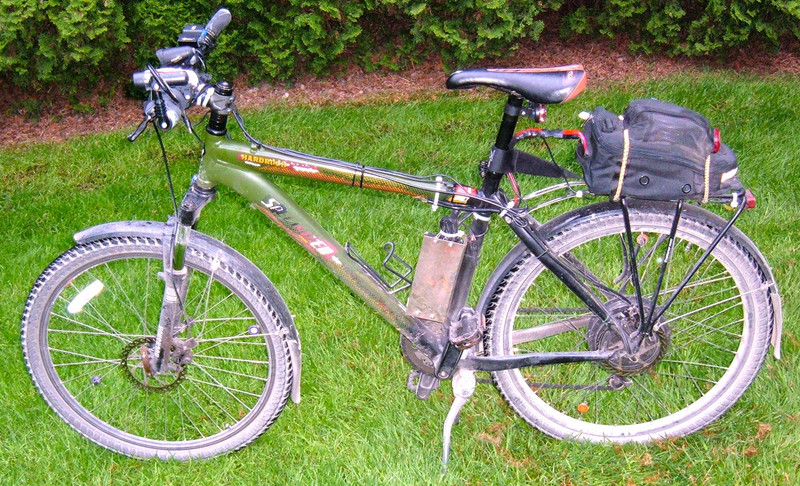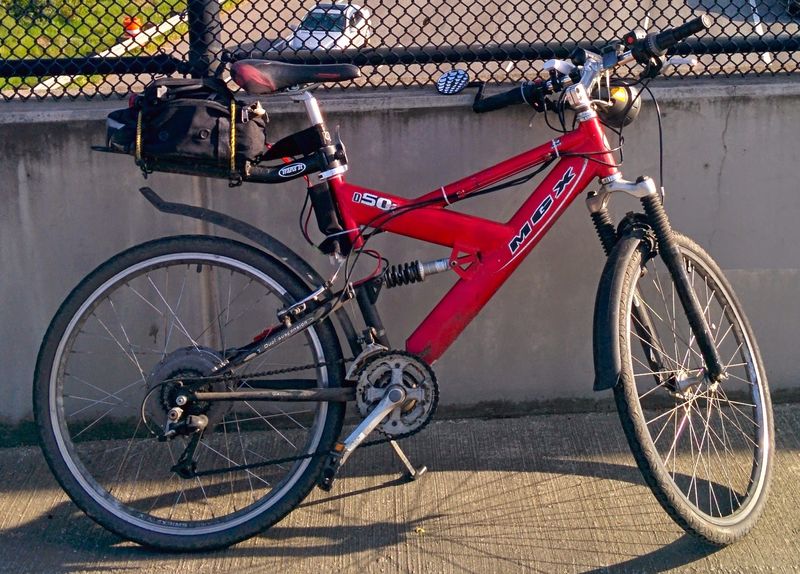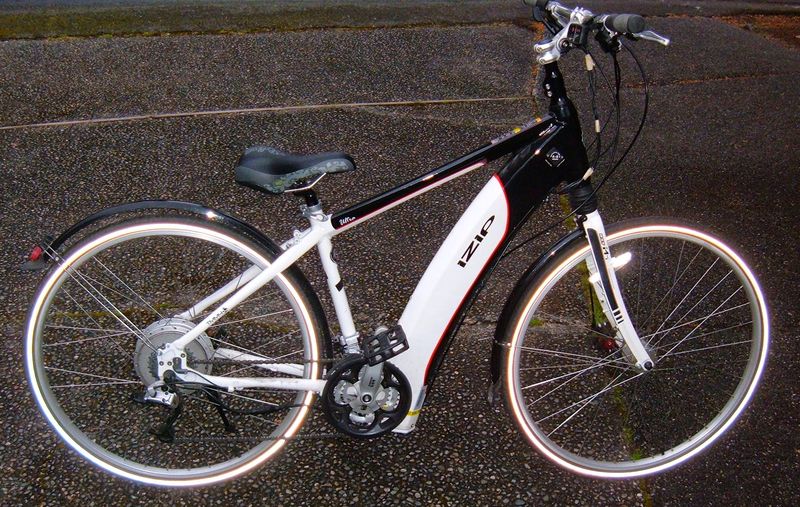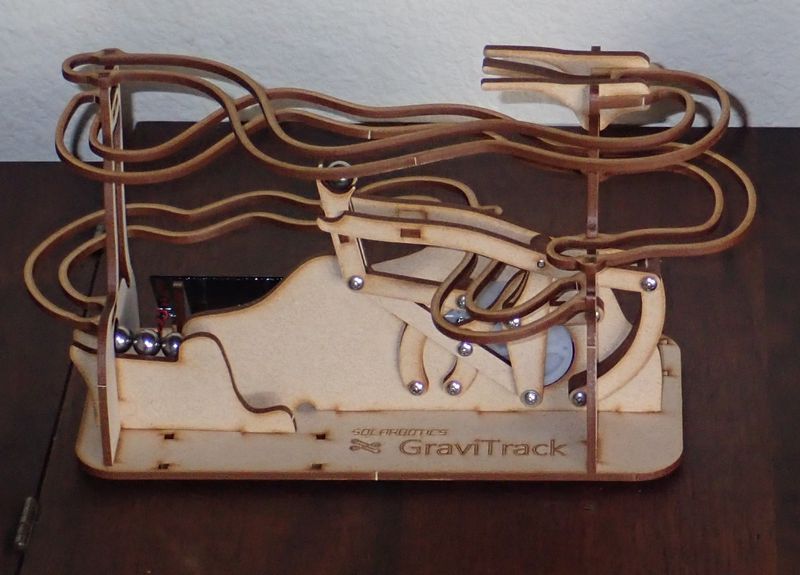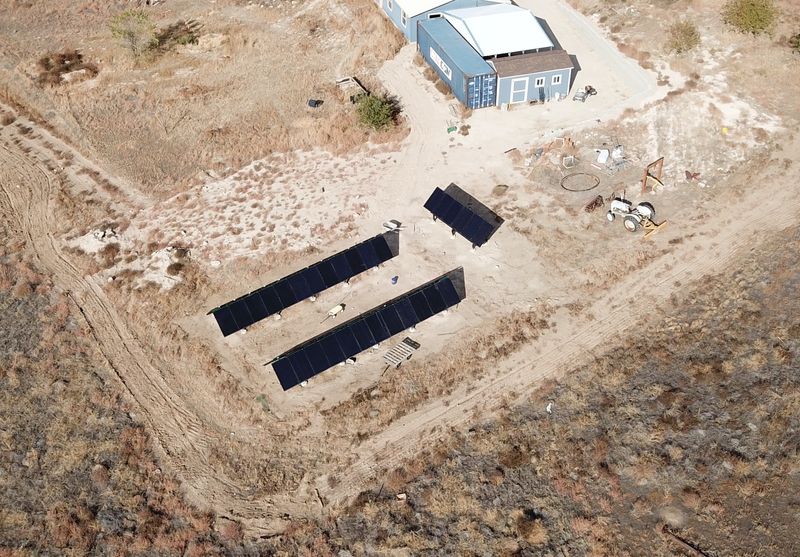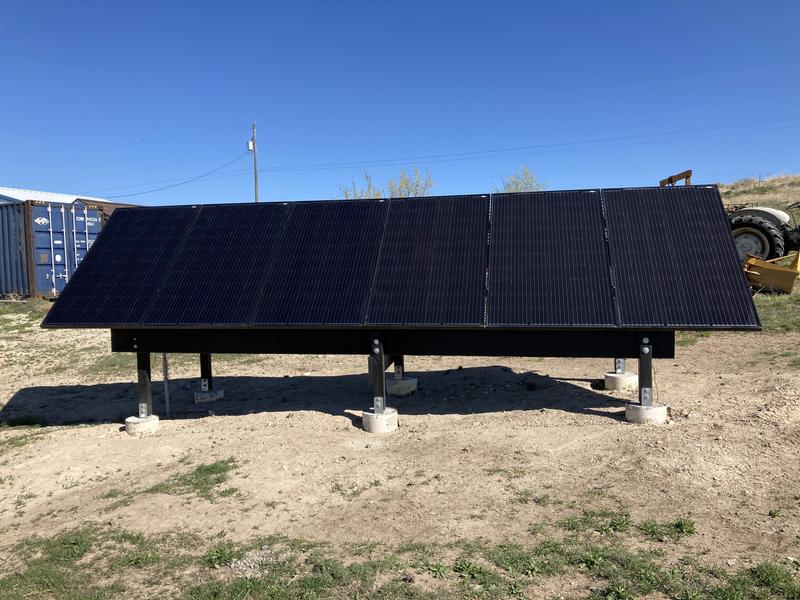After spending a year commuting on my first ebike, it finally failed on me - I overheated the motor too many times, and it quit for good. There was a lot of other stuff starting to go wrong as well, and I’d learned a lot more about what I wanted and what worked, so I built myself a new one in October 2014!
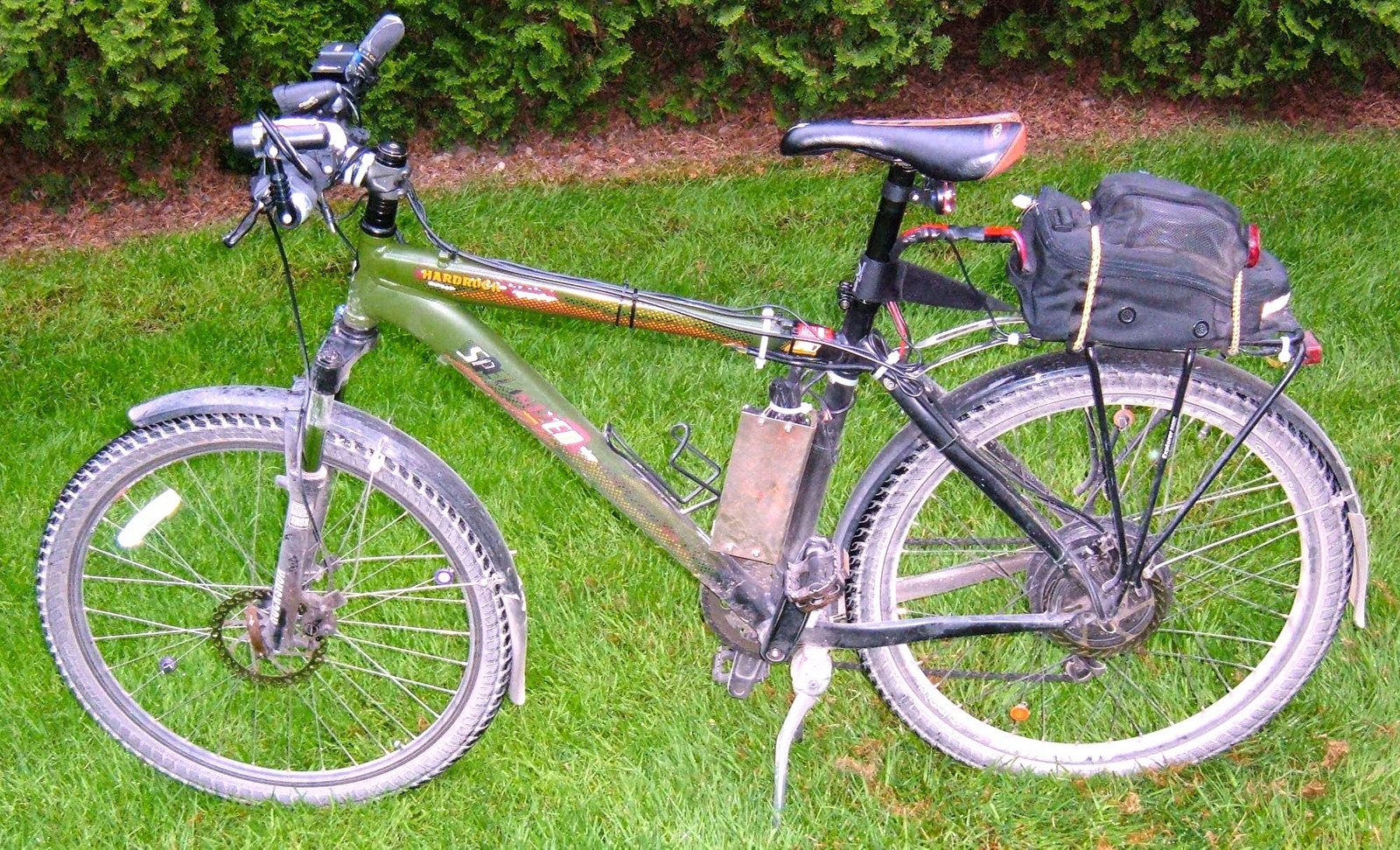
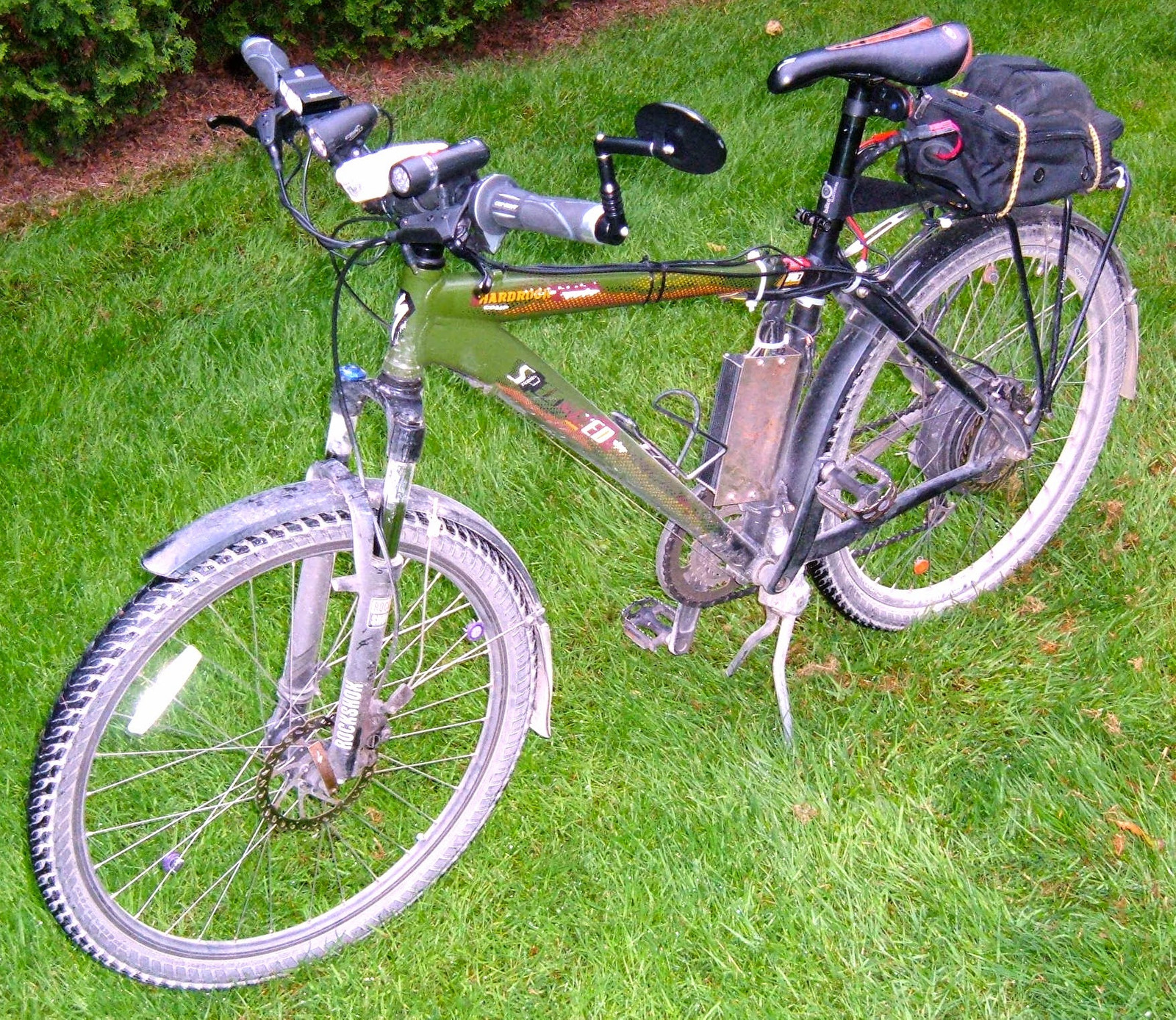
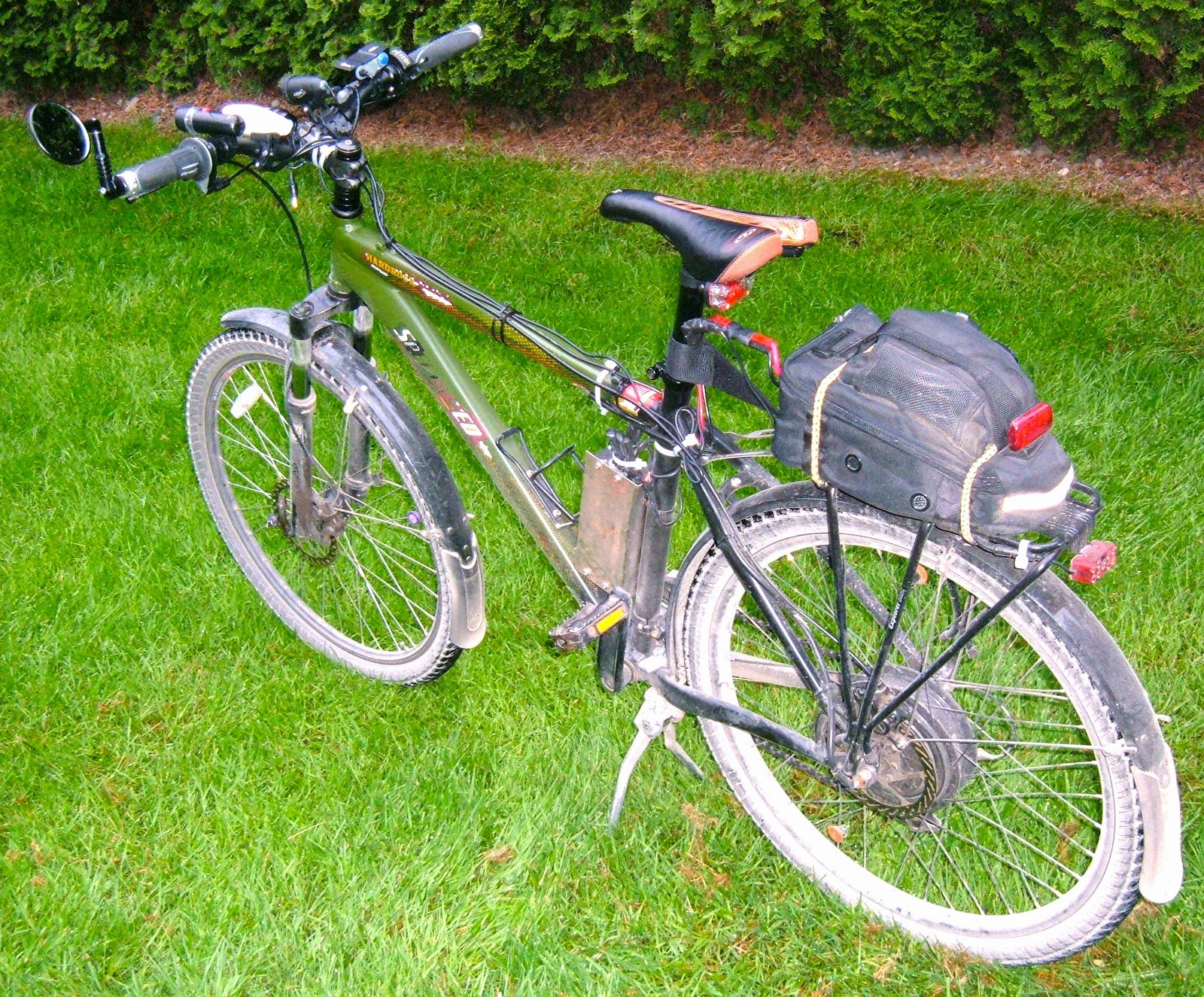
This bike is built with everything I’ve learned from my previous ebike, and is built as a robust, rugged commuter designed for my 10 mile daily round trip commute. I’m not a fan of fixing my daily driver, so it’s built with this in mind. As may be obvious from the pictures, I’m not a huge fan of washing it, either.
It’s built on a used 2007 Specialized Hardrock frame with 26” wheels, uses my existing battery pack, is driven by an HPC Thunderbolt motor/controller combination, and is built to be rock solid reliable. So far, so good!
Features I wanted when building this bike:
- More power. The 600-700W output of my previous build just wasn’t enough for the hills I deal with and my desired level of “e-motorcycle” behavior.
- Disc brakes. The rim brakes on the previous build were better at grinding the wheels into dust than stopping the bike, especially when wet. Paired with Seattle traffic, this was quite terrifying on multiple occasions.
- Better fenders. The mountain bike style fenders didn’t keep me dry in the rain.
The frame and basic donor bike were purchased on Craigslist. However, I’m not sure that purchasing a donor bike was the right option for this build. I ended up replacing most of the hardware that came with it to get it to where I wanted it, and I’m thinking it might have been slightly cheaper to go with a frame-up build.
Read on for more details…
Power Systems
The core of the bike’s power is the battery pack I used in my previous build. It’s a 38.4v 13.2AH 506Wh 40A LiFePO4 battery that lives in a battery bag on the rear rack. When building this bike, I wanted to remain within the 40A output limit of the pack’s BMS (with a bit of a margin for my lighting), as I didn’t care to replace the pack - it’s a long life pack, and I only had a year of use on it.
The motor and controller come from Hi-Power Cycles. I was certain I wanted a geared hub motor due to the hills on my commute and my general lack of caring about regen. After calling them (they’re awesome to talk to and wonderfully knowledgable), I ended up with a custom package consisting of:
- A “HPC Thunderbolt” V4 motor (really, a BMC V4C) - geared, rear hub, capable of way more power than I was going to put into it (rated up to 88v/45A - I’m putting 38v/35A through it).
- A 36-60V 35A BMC motor controller. While I’m using the low voltage end of the controller, the 35A peak current fits comfortably within my battery pack limits, and if I want more speed down the road, I can change to a higher voltage battery pack and change nothing else.
- A heavy duty 26” rear wheel, prebuilt around the motor. I’ve never regretted a heavy duty rear wheel before, and ebike builders tend to use thicker spokes than most bike shops. So far, so good - no issues with the wheel, and no broken spokes (a common problem for me).
- A thumb throttle. I could have gone with a motorcycle style twist grip, but I liked the thumb throttle on my previous build, so I went with the same thing. It works fine.
This combination cost me $1165 shipped. I’m very happy with it, and would absolutely recommend talking to HPC if you want parts.
The end result of this power system is a bike that will do just over 20mph on flat ground, and has a theoretical peak power of 1350W (1.8hp), which I will argue is probably somewhere around 1000W mechanical. I have to pedal slightly on a steep hill, but otherwise, it does a great job of hauling me around
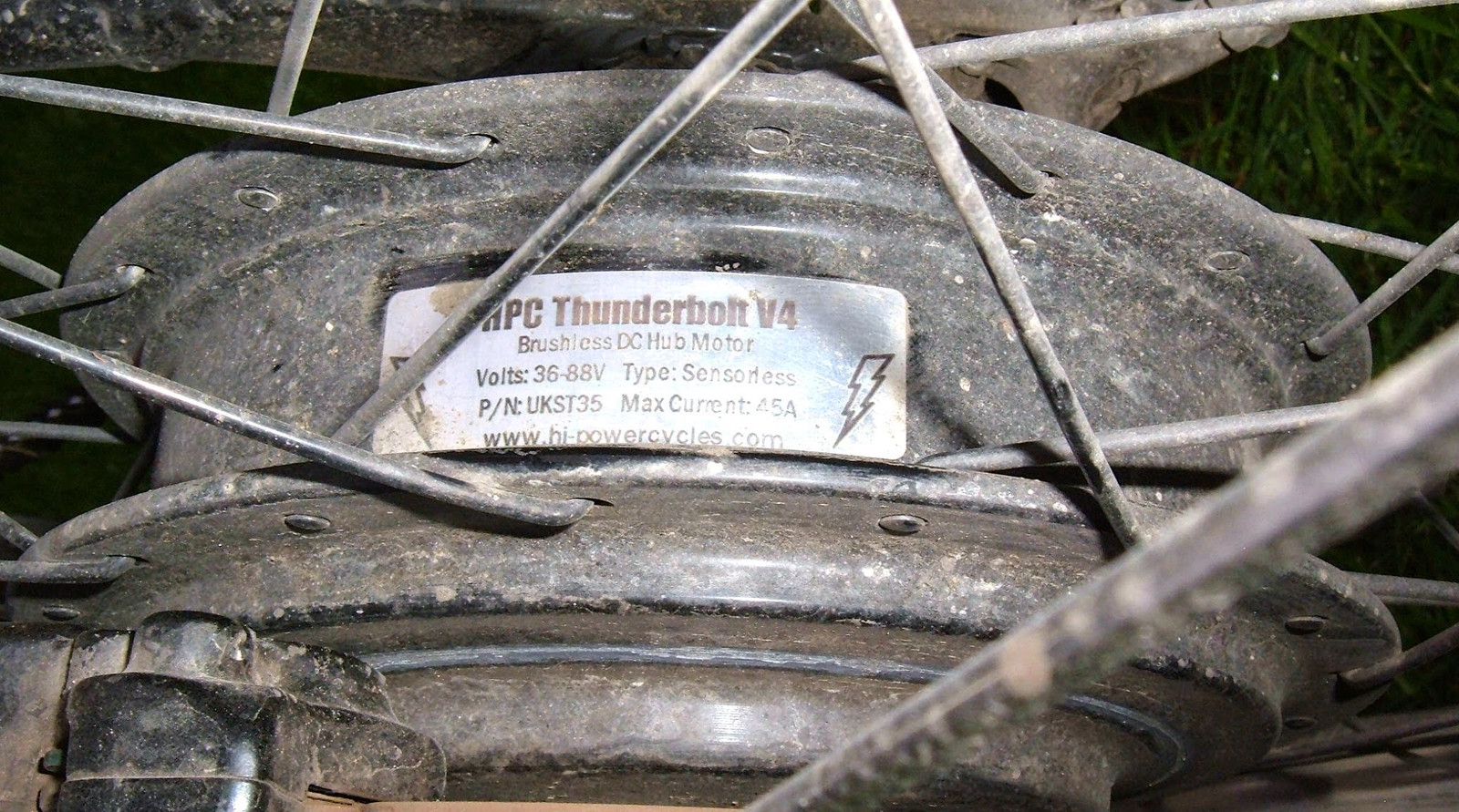
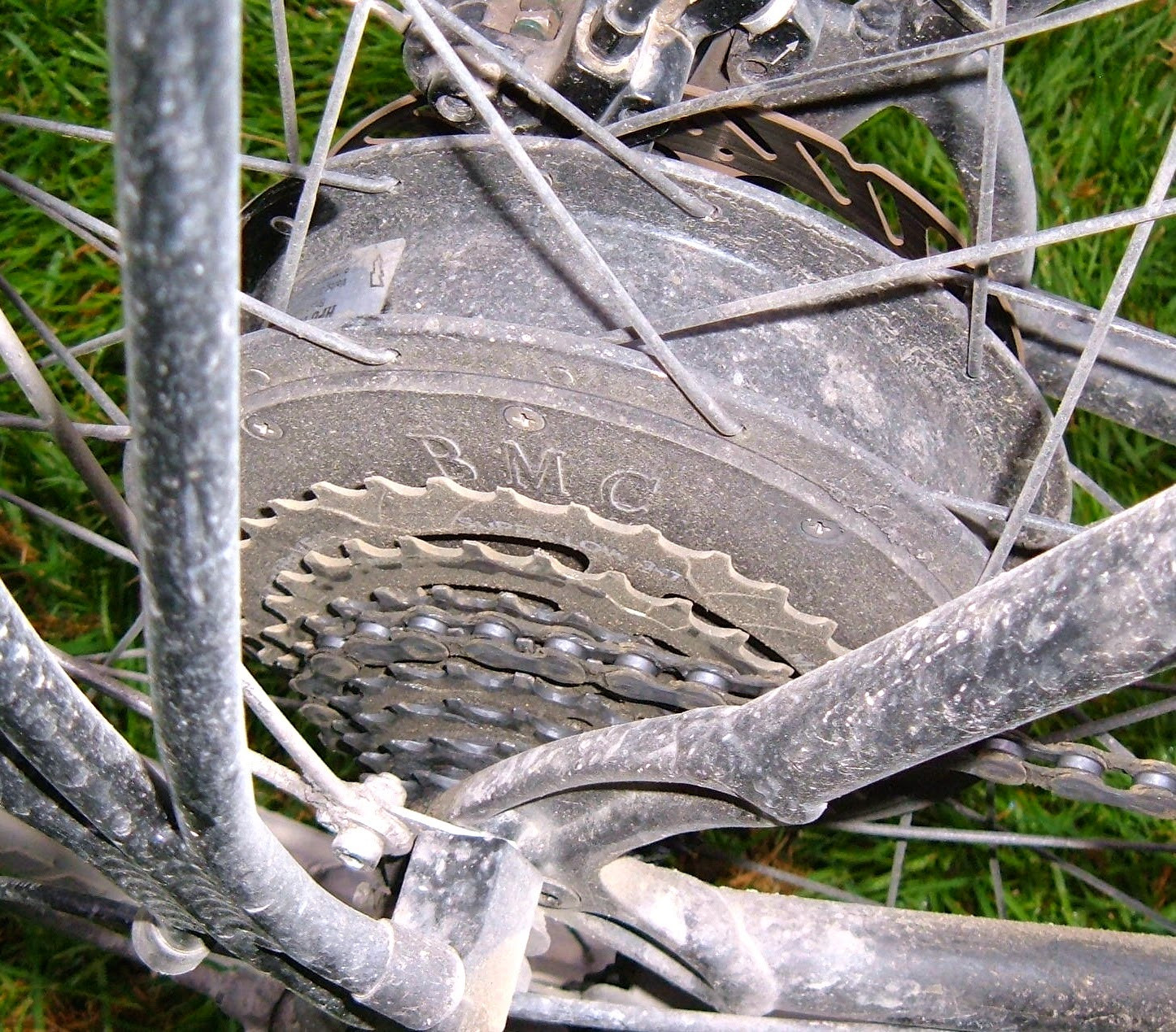
The controller is mounted in the center triangle, on some bent aluminum plate that the bike shop fabricated for me. It leaves the lower water bottle location clear, and keeps the controller more or less out of the road spray.
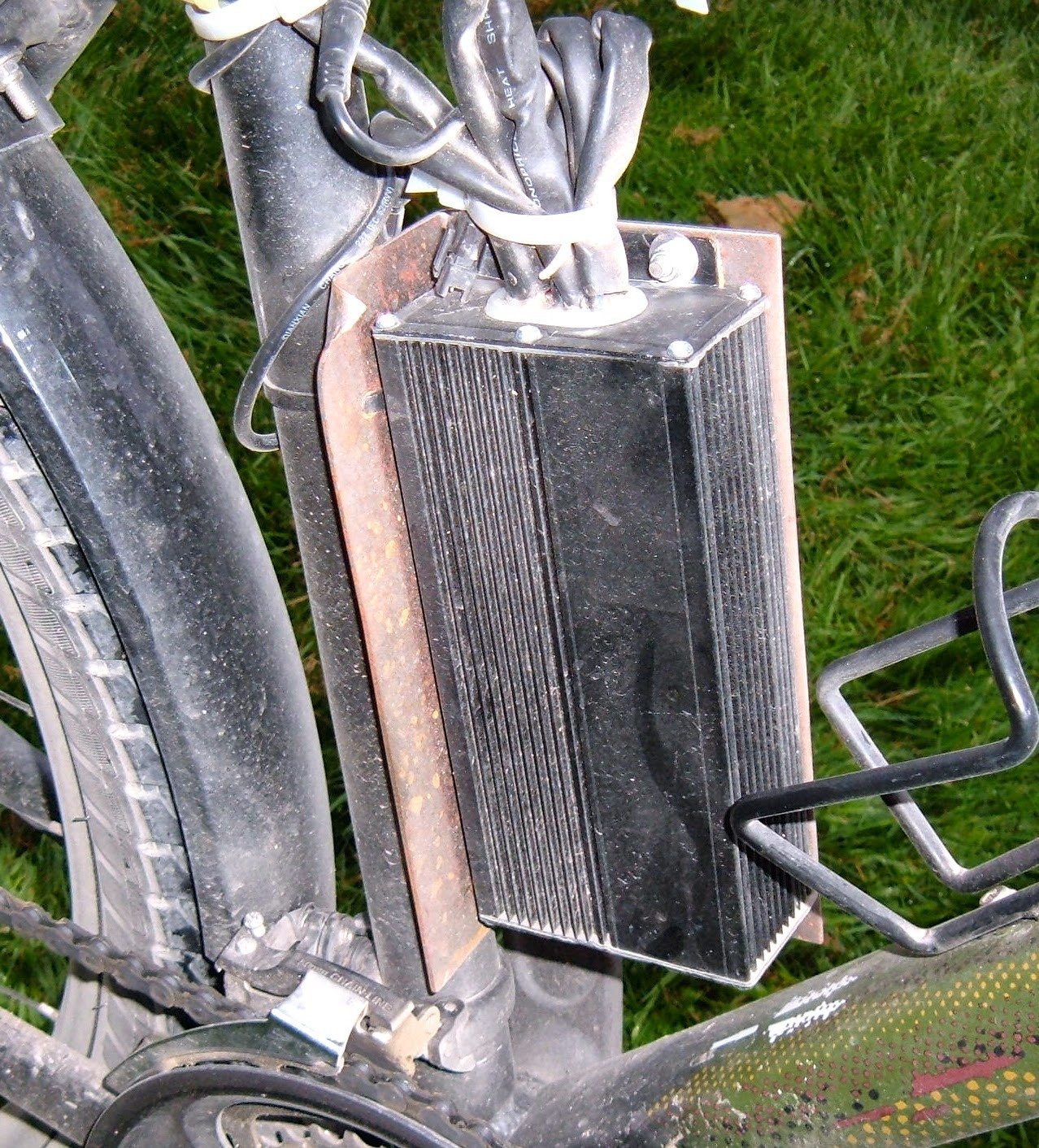
Brakes and Shifting
This section is a prime example why I should have started with a bare frame.
The bike came with cable operated disc brakes. They were adequate, but in no way good. A typical ebike is a heavy, fast moving bike. Throw in some good hills, and the brakes were better than rim brakes, but not by a large amount. I wanted proper stopping power, and at the recommendation of my local bike shop, I replaced them with dual piston hydraulic brakes (front and rear). The upgrade was entirely worth it, and the bike stops wonderfully, even in the wet. I’m a bit hard on pads, but have been getting much better life out of the pads than my rim brakes, and I’m not destroying the wheels in the process. So, a huge win! The upgrade cost was around $150, as the bike shop had a used set of dual piston brakes laying around (it’s always worth asking) from a wrecked bike.
The shifters and brake levers on the bike I purchased were integrated - this is a mistake. The bike came with index shifters in the normal position (front chainring on the left, rear cassette on the right - backwards though this feels to me now). I ended up with a fairly normal ebike setup consisting of a twist grip shifter for the rear cassette on the left bar (“backwards” from how it normally is), and a single large front chain ring. I’m running a 48 tooth front ring, and while the smaller chainrings are present, the front derailleur is locked into position for the large ring and has no cable connected to it. I have sufficient gear range for my needs, and my “motor has failed” plan involves walking the bike up steep hills - there’s no point in additional complexity for a very rare situation.
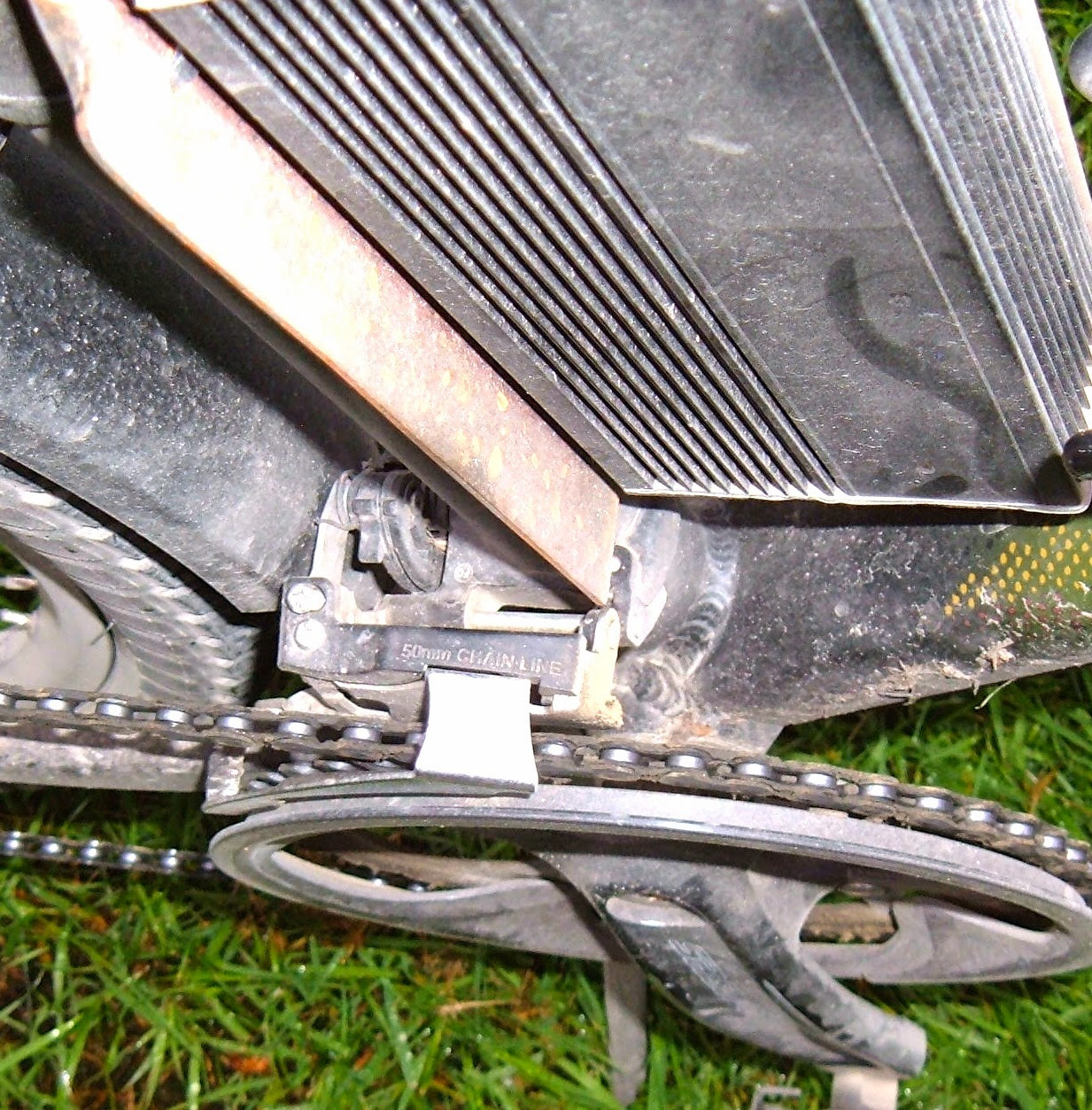
Wheels and Tires
My wheel, tire, and tube selection will make most bicyclists cringe. I literally went for the heaviest stuff I could find.
The front wheel is a pretty standard mountain bike build, but the rear wheel is the heavy duty wheel offered from HPC, with heavy duty spokes.
The tires are heavy duty, armored, road-focused tires. I either ride on the road or light gravel trails, and don’t like punctures. So, armored tires make sense for my use.
The tubes are heavy duty, puncture resistant tubes. Which are then slimed to improve resistance to leaking from small punctures.
I don’t know what the total wheel/tube/tire weight is, and I don’t care. I have a motor to deal with those issues. On the other hand, I hate flat tires on my commute with a passion, and this setup is working fairly well so far against such things. So, I like it.
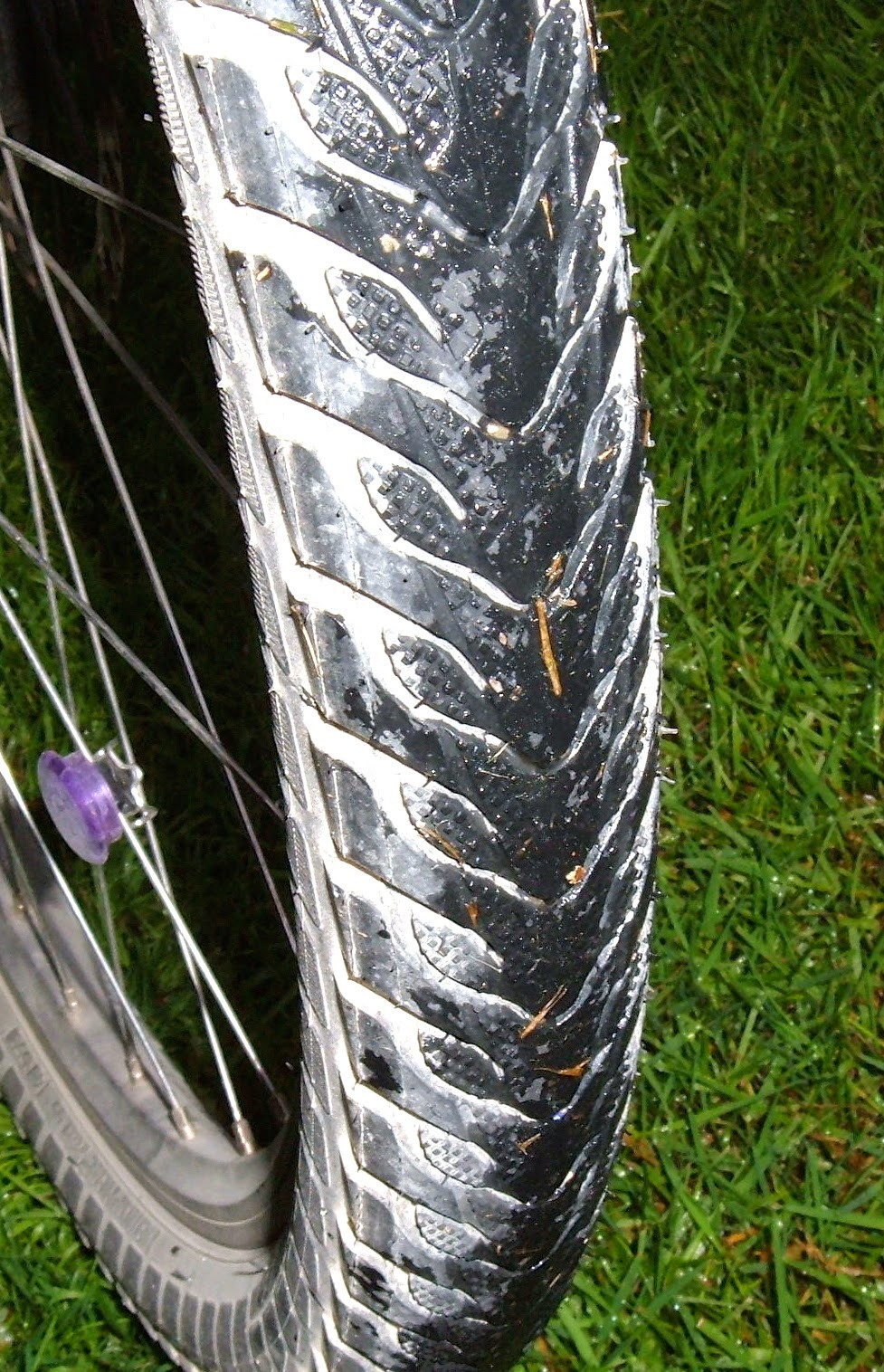
Lighting
I commute in the dark and rain a lot, and after the amazing headlight on my last build, I knew I wanted something powerful for this build as well.
My main front light is a Cycle Lumenator from Grin Technologies ($160). It’s a light specifically designed for ebikes, runs on a wide range of voltages (15v-100v), and is a very high quality light. However, it’s not suited as an only light for high speed running in the dark. It does a great job of filling in close and illuminating the path, but it doesn’t have a very far throw. I didn’t feel comfortable with it as my only source of light, since I could see about far enough to find out what I was going to hit briefly before I would hit it.
The secondary front light is a cheap 2000 lumen Cree LED bicycle light ($20). It comes with it’s own battery pack, and while the quality isn’t great, it has a tightly focused beam, which is exactly what I wanted. I use this to illuminate beyond the range of the Lumenator, and the pair of them works perfectly. I can run this light on the dimmer setting for the most part, and use the brighter setting to see further in the rain. I don’t yet know if it will run on my pack voltage, but I have one on order to tear apart and find out…
I’m using a BikeBlaze 1W light as my forward firing strobe. It runs on AAs, and lasts about forever on a set of batteries - highly recommended!
My primary rear light is a LED8RB from Grin Technologies ($60). It’s 8 LEDs epoxied into a plastic brick that looks an awful lot like a Lego, and the whole brick gets lit up by the LEDs. It’s pack powered and has been wonderful.
I have a few other rear lights that are normal battery powered bike tail lights, and I use them if needed, but mostly, I rely on the main LED tail light and a reflective backpack to handle rear visibility. Since I frequently am going faster than traffic on my commute, it works well for me.
There are some scattered other lights mounted on the front bar that are for testing the reliability and lighting capability of various other cheap lights. I’ve lost a few to bad mounting brackets, and at this point, accept that if a light comes loose, it won’t survive coming to a stop on the road. Oh well.
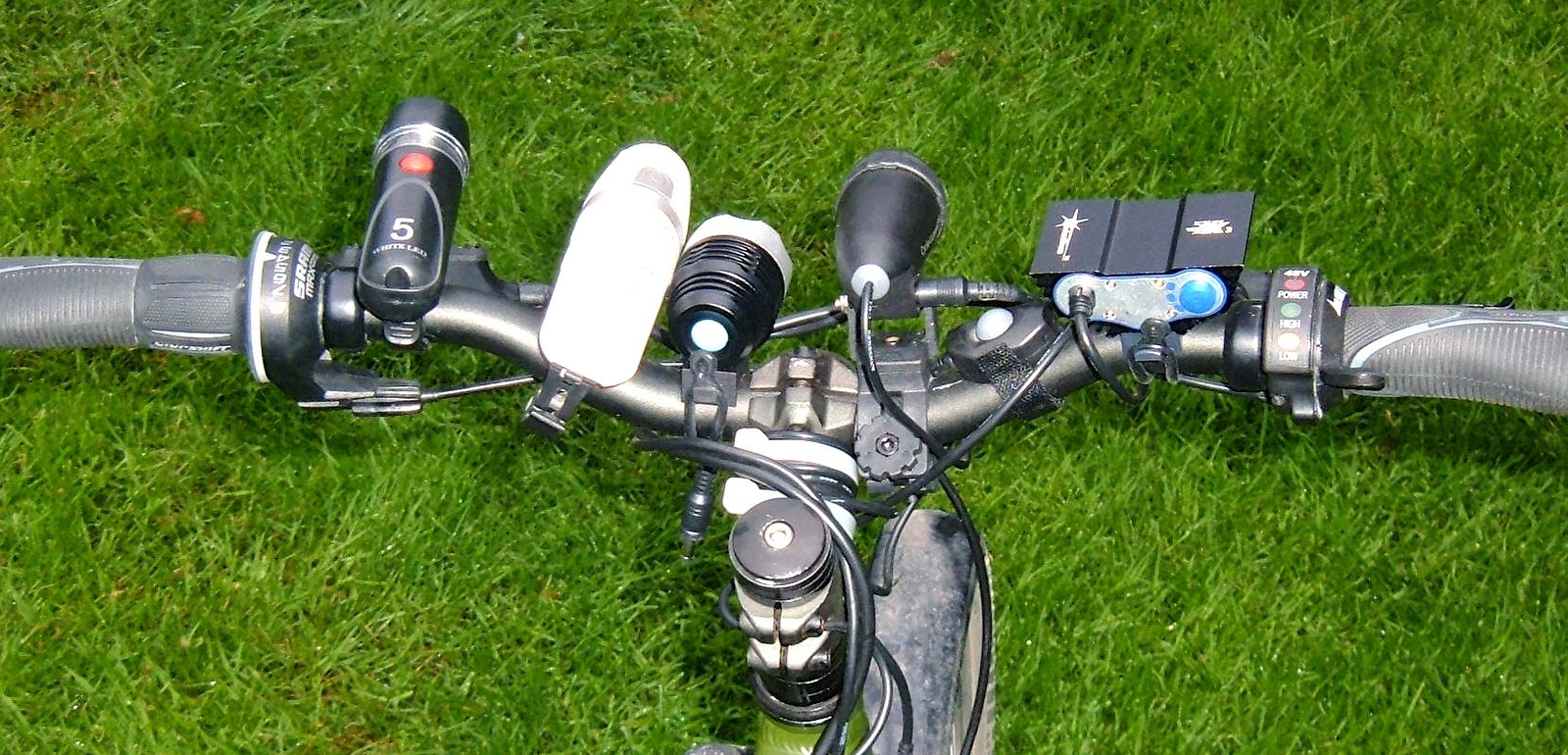
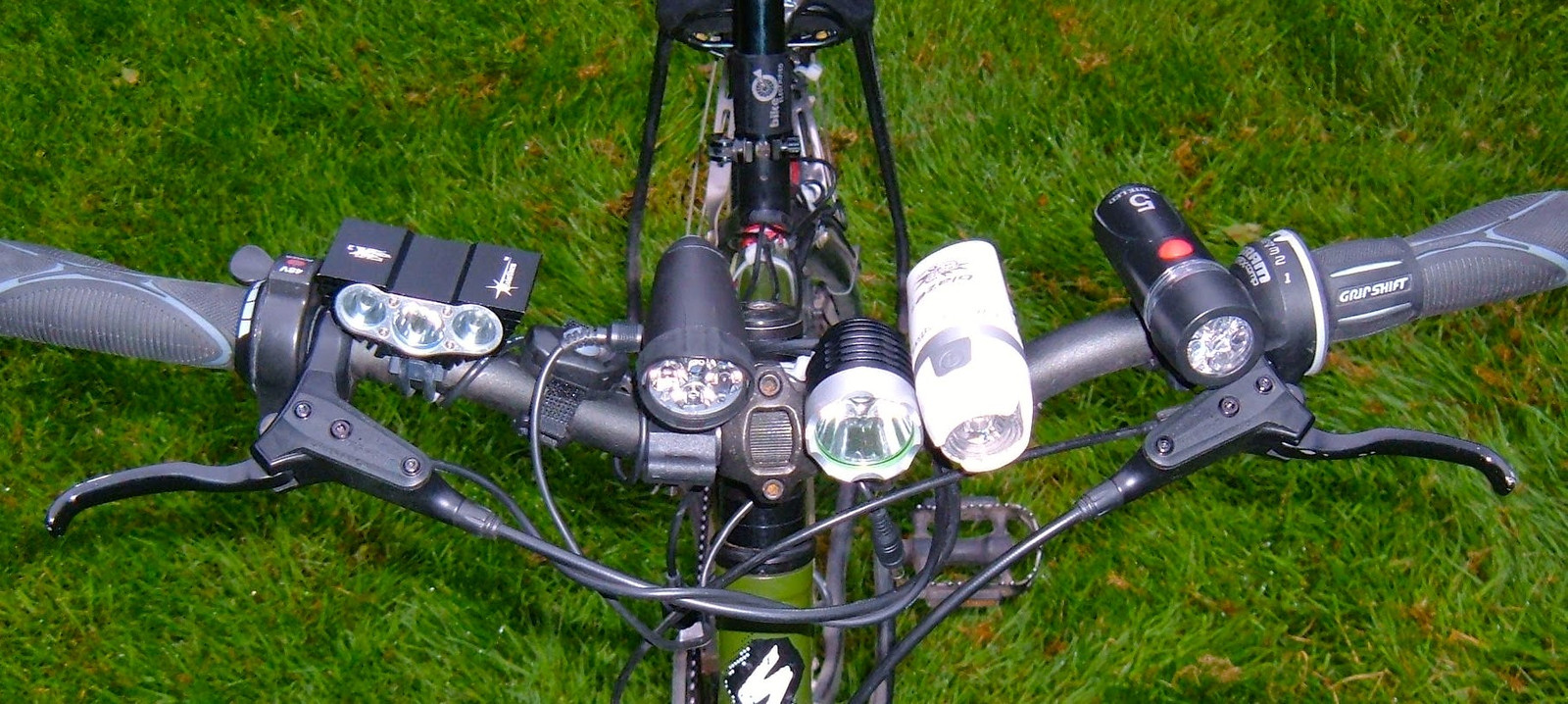
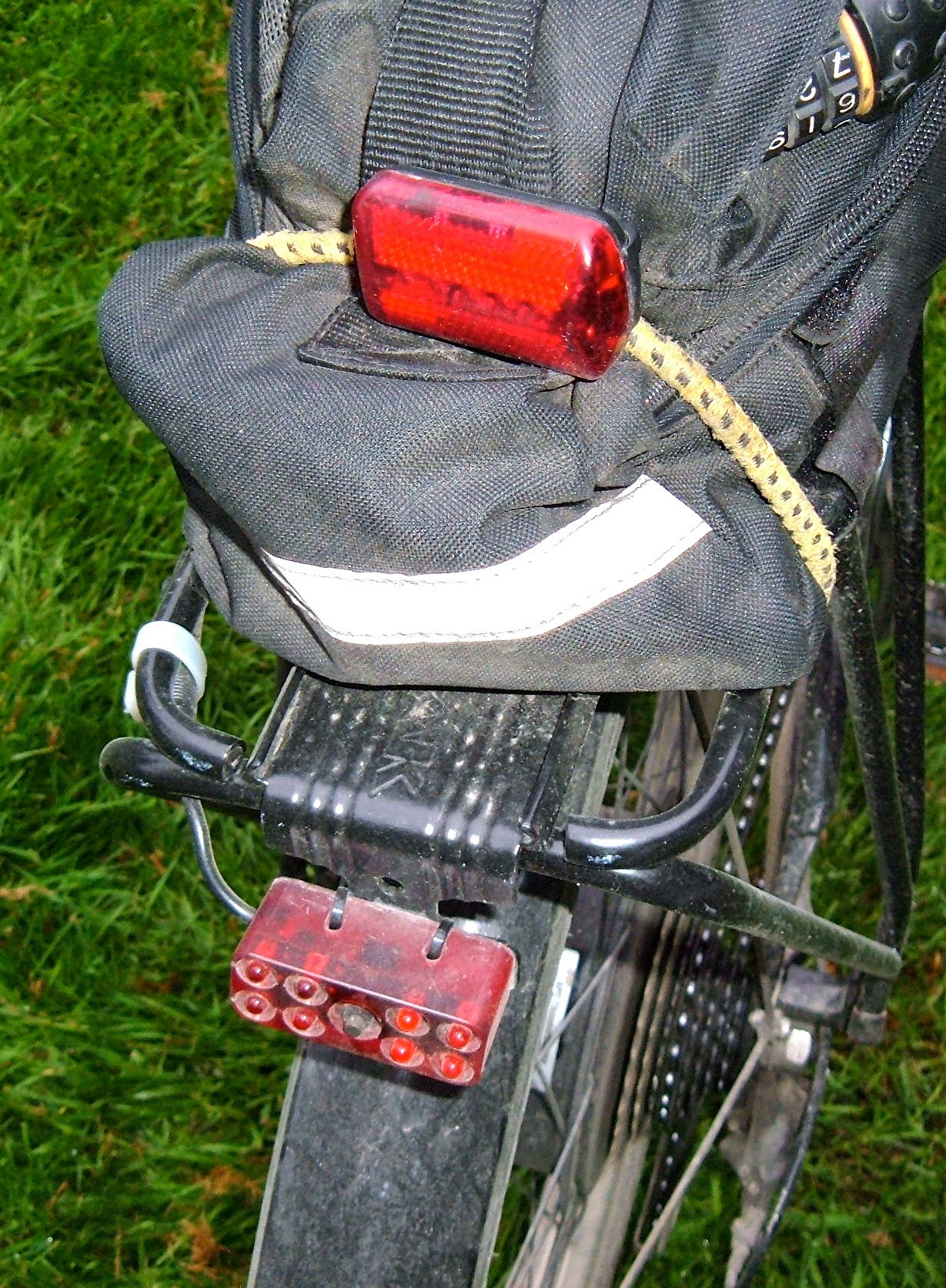
Other bits and pieces
The dual leg kickstand is awesome. Unfortunately, the bike does tend to sit “nose high” on pavement when on the kickstand. It looks a bit weird, but it works fine. The kickstand deals nicely with the somewhat high center of gravity from the battery pack, and is much more stable than a normal single kickstand.
The left bar has a rear view mirror. This is, in my opinion, a requirement for commuting on roads.
Both wheels have tightly fitted fenders that wrap around far more of the wheel than on my previous bike. This does a great job of keeping the road spray off me. I still pick up some spray from the front tire when going through standing water, but I no longer get my backpack coated in grime, which was the major problem with the previous bike.
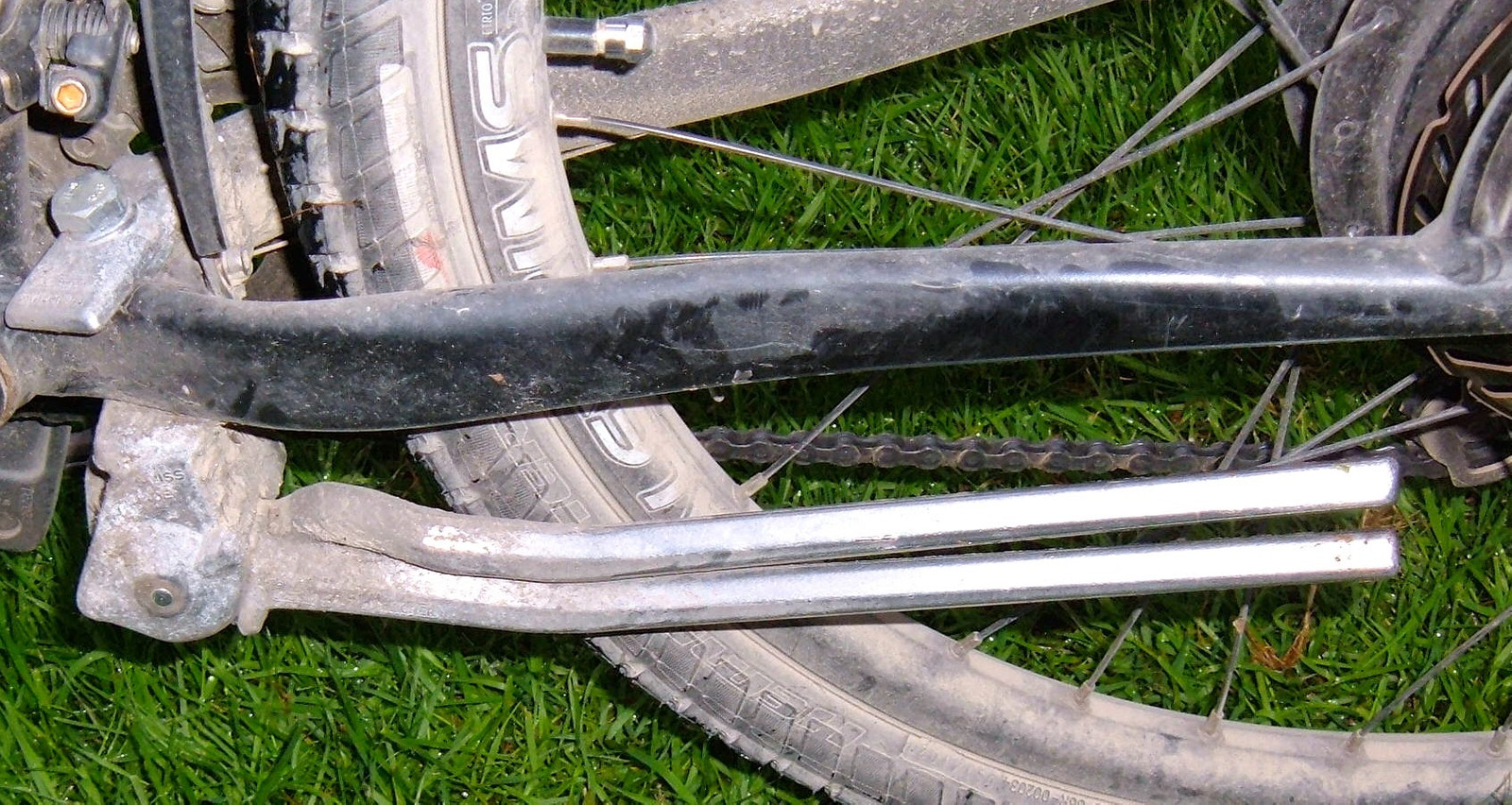
Riding
As far as riding goes, this bike rocks! It does exactly what I ask of it, and does it well. It pulls hard, climbs hills well, will cruise along on the throttle at 22-23mph with no effort on my part, has plenty of range for my round trip, and has been quite reliable so far. I typically cruise on the smallest rear sprocket (8), climb light to moderate hills with sprocket 7, stop/start in 5 or 6, and climb very steep hills in 3. I really have no need for the largest two gears in the rear, and the chain is badly crossed if I’m using them, so they mostly function as spacers. I keep them around in case the motor or battery dies and I need to climb hills.
Costs
$300: Donor bike
$1165: Motor, controller, throttle, rear wheel.
$500: Parts & labor at the bike shop. New front suspension forks, tires, tubes, rear cassette, chain, aluminum plate for controller mounting, kickstand, etc.
$150: Hydraulic disc brakes
$585: Battery pack & charger (carried over from previous build)
$200: Assorted lighting products
$100: Random parts I’ve forgotten about.
Total build cost: $3000 ($2400 for the new build, since I reused the battery pack)
Comments
Comments are handled on my Discourse forum - you'll need to create an account there to post comments.If you've found this post useful, insightful, or informative, why not support me on Ko-fi? And if you'd like to be notified of new posts (I post every two weeks), you can follow my blog via email! Of course, if you like RSS, I support that too.
